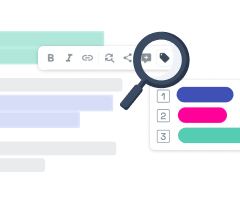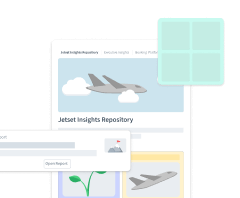Workspace Analytics
Workspace analytics help you track how your team is using Condens—giving you clarity on engagement, efficiency, and output across your organization. It's especially valuable for UX research leaders and research operations professionals who need to ensure that:
Paid seats are being used effectively
Research is flowing through the team as expected
The impact of a centralized research repository can be clearly demonstrated to stakeholders.
By surfacing these insights, Workspace Analytics supports smarter decisions around license management, team performance, and process optimization.
Charts
You can access Workspace analytics by navigating to: Settings > Workspace > Analytics. From here, you’ll see a series of charts and metrics visualizing activity in your workspace. Each chart gives you a different perspective on how research is produced:
Active Users

This chart shows how many licensed team members are using Condens over time across all your workspaces. If you’re managing licenses, it’s a quick way to confirm whether all paid seats are in use and contributing to research activities. A drop in usage might indicate onboarding challenges, shifts in team focus, or simply unused capacity.
Active users can be viewed by role or user group. Additionally, you can use the filter to combine both roles and groups in a single view. For example, see how many active Contributors the Marketing group has.

If a user is member of more groups, or their role changes in the selected time frame, they will be counted once for each group or role respectively.
Created Projects

Here you can track how many Projects have been started. This metric can reflect the pace of research across your organization. For instance, a spike might coincide with a product launch phase, while a drop could suggest a quieter period or a shift in priorities.
You can narrow down the data by using filters. For example, you might look into how many projects were created as part of a specific Project Folder and where usability tests are used as a research method, or filter them by status to see how many are ongoing, finished, or are being prepared.
Created Sessions

Measures the amount of raw research captured in the workspace—interviews, usability tests, and so on. This helps you assess how much data the team is collecting, which is useful for tracking activity volume and ensuring that research programs are progressing as planned. It can also surface trends in data collection over time, helping you align research efforts with team or product timelines and spot potential gaps early on.
You can again narrow it down by a number of filters, including those created within a specific Project, by specific contributors, or where specific Participants were included.
Created Highlights

Highlights are a strong indicator that teams are engaging with raw research data. A steady flow of new Highlights means contributors are actively analayzing and tagging key moments. This is especially useful for seeing whether collected data is being meaningfully processed—not just stored—and whether the team is engaging in analysis that leads to insights worth sharing.
Using filters, you can precisely view how many Highlights was created by a team member, or for example, how many highlights are nested under a specific Tag.
Created Artifacts

This metric counts the number of Artifacts created to synthesize findings, helping you measure how raw data turns into accessible insights and supporting conversations around research value and team efficiency. If you’re aiming to increase knowledge sharing or create more reusable insights, this chart helps show how often synthesis is happening across projects.
Filter by Artifact type to view how many Reports, Affinity maps, or Personas specifically were created, or filter by Project information fields to dive deeper into Artifacts created within a specific Project, using a specific research method, or by a certain contributor.
Published Artifacts

This chart focuses on which Artifacts are being published, making it easier to assess whether insights are being made accessible to wider audiences. If few Artifacts are published despite high research activity, it may be worth checking whether teams feel confident in sharing findings or if synthesis processes need refinement.
Filtering your data
Analytics can be filtered by time periods—daily, monthly, quarterly, or yearly.
Each chart also supports its own filters, allowing you to drill down into specific data views. Just look for the icon in its upper-right corner.
It's easy to combine multiple filters for a precise view of your analytics data. For example, you might want to see Highlights created only within a particular Project by a specific team. A research ops lead could filter to quarterly data to prepare a report on team output trends, or isolate usage during a specific product development sprint. In either case, it’s easy to narrow down data for a very precise overview.
Export
You can export workspace analytics data as a CSV file. To do so, click the three-dot menu in the top right corner of the analytics section and select Export detailed visits report (CSV). In the next step, you can specify the time frame.
This is ideal for pulling metrics into internal reports or dashboards, especially for license audits or quarterly business reviews.




